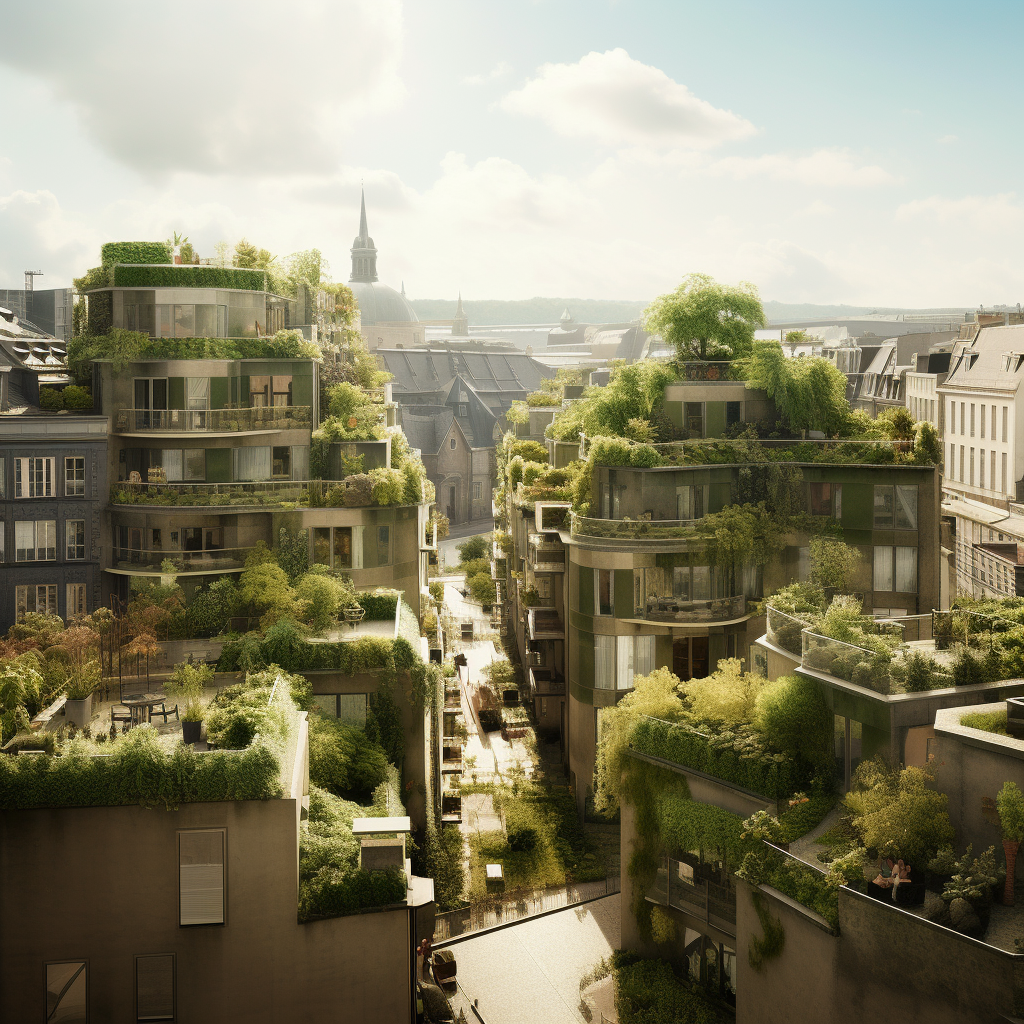Cooling a city using urban design ideas [1/?]
A city that reaches temperatures of 35-40 degrees Celsius during the summer would have specific needs and characteristics to ensure the well-being and comfort of its residents. How can urban, city planning as well as architecture help in order to ensure these needs are met, making the city more friendly and livable during the heat waves. It involves implementing design strategies that help mitigate the urban heat island effect and improve thermal comfort for residents.
In part 1 we will look into implementing a few of the many methods that can contribute into cooling down a city, like the use of green roofs and walls, as well as the use of urban trees and shade structures.
As urban areas continue to expand and face the challenges of climate change and urban heat island effects, implementing these green infrastructures can be a valuable strategy to mitigate heat and enhance urban sustainability.
Here's how they contribute to cooling down a city:
Reduced Heat Absorption: Traditional urban surfaces such as concrete and asphalt absorb and retain a considerable amount of heat, leading to higher temperatures in the city. Green roofs and walls, on the other hand, are covered with vegetation, which reflects more sunlight and absorbs less heat. This helps in lowering the overall heat absorption in the city.
Evapotranspiration: Plants on green roofs and walls engage in a process called evapotranspiration, where they release water vapor into the atmosphere. This natural cooling effect helps to reduce ambient temperatures in the surrounding area.
Shading and Insulation: Green roofs and walls provide additional layers of shading and insulation for buildings. By blocking direct sunlight from hitting rooftops and walls, they prevent excessive heating of structures. This leads to reduced energy consumption for cooling indoors, further contributing to the cooling effect at the city level.
Air Quality Improvement: Vegetation helps to absorb pollutants from the air, which can be particularly beneficial in urban environments where air quality is often a concern. Cleaner air contributes to a more comfortable and healthier urban environment.
Stormwater Management: Green roofs and walls can capture and retain rainwater, reducing the amount of runoff that enters the city's stormwater systems. This not only helps prevent flooding during heavy rainfall but also cools down the urban environment as the water evaporates from the green surfaces.
Biodiversity Enhancement: Introducing green spaces in an urban setting can encourage biodiversity by providing habitats for various plant and animal species. A diverse ecosystem can better regulate local temperatures and contribute to a more balanced urban climate.
Psychological and Social Benefits: Green spaces have been shown to have positive effects on the mental well-being of city dwellers. When people have access to green roofs, walls, and parks, they are more likely to spend time outdoors, reducing the strain on indoor cooling systems and creating a cooler microclimate within the city.
Air Quality Improvement: Trees help improve air quality by absorbing pollutants such as carbon dioxide, ozone, and particulate matter. Cleaner air contributes to a more pleasant and cooler urban environment.
Wind and Airflow Regulation: Trees and strategically placed shade structures can alter wind patterns and create cooler air corridors within the city. Properly planned urban greening can enhance natural ventilation and airflow, improving overall comfort.
Reduced Energy Consumption: As cities become cooler due to the presence of trees and shade structures, the demand for air conditioning and cooling systems decreases. This reduction in energy consumption helps in lowering greenhouse gas emissions and contributes to overall sustainability efforts.
Enhanced Aesthetics and Livability: The presence of green spaces, trees, and shade structures adds to the aesthetics of a city, making it more inviting and pleasant for residents and visitors. This, in turn, encourages outdoor activities and contributes to a higher quality of life.
Mitigating the Urban Heat Island Effect: Urban areas often experience higher temperatures compared to their rural surroundings due to the abundance of heat-absorbing surfaces and limited vegetation. Trees and shade structures counteract this urban heat island effect by providing shade and cooling effects, creating a more comfortable microclimate
Overall, green roofs and green walls can help cool down a city by reducing heat absorption, promoting evapotranspiration, shading and insulating buildings, improving air quality, managing stormwater, enhancing biodiversity, and providing psychological and social benefits to residents. As a result, cities that incorporate these green infrastructures can enjoy a cooler and more sustainable urban environment. To maximize the cooling benefits of these mechanisms city planners and urban designers need to consider factors such as tree species selection, proper maintenance, strategic placement of shade structures, and integration with other urban design elements. By doing so, they can create a greener and cooler urban environment that promotes sustainability and well-being for its inhabitants.



